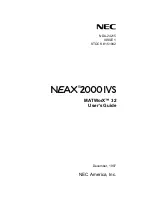
CHAPTER 23. LIVE INSTRUMENT REFERENCE
431
a hammer, a pick or a bow. The frequency of the oscillation is determined by the effective
length of the string, which is controlled by the nger/fret interaction or
termination
. A
damper
can be applied to the strings in order to reduce the decay time of the oscillation.
This is the case on a piano, for example, when felt is applied to the strings by releasing the
keys and sustain pedal. The vibration from the string is then transmitted to the
body
of the
instrument, which can radiate sound ef ciently. In some instruments, the string vibration
is transmitted directly to the body through the bridge. In other instruments, such as the
electric guitar, a
pickup
is used to transmit the string vibration to an ampli er. In addition to
these main sections, a
lter
section has been included between the string and body sections
in order to expand the sonic possibilities of the instrument.
The Tension interface is divided into two main tabs, which are further divided into sections.
The
String
tab contains all of the fundamental sound producing components related to the
string itself:
Excitator
,
String
,
Damper
,
Termination
,
Pickup
and
Body
. The
Filter/Global
tab contains the
Filter
section, as well as controls for global performance parameters. Each
section (with the exception of String and the global Keyboard section) can be enabled or
disabled independently. Turning off a section reduces CPU usage.
23.13.2
String Tab
The String tab contains the parameters related to the physical properties of the string itself,
as well as the way in which it's played.
The Excitator Section
Tension's Excitator
Section.
















































